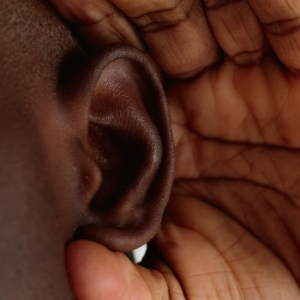Hearing is of enormous importance for everything we do in our everyday lives. With the help of our hearing, we become aware of our surroundings and receive information about things that are happening around us. The sense of hearing is important in communication and interaction with other people as most of the communication between people takes place with sound.
Hearing gives us information and warns of dangers. Our hearing is very sensitive, and extremely high volumes and noise can damage it. And over the years, with aging, hearing tends to deteriorate.
Hearing loss is very common and may impact people of all ages. Recognizing the signs of hearing loss isn’t always easy, especially when it’s gradual. If you are not hearing as well as you used to, it may be time to get a hearing test.
Below, we share everything you need to know about the various hearing tests available.
Pure-Tone Audiometry

Pure-tone audiometry is performed by an audiologist at a hearing clinic. The hearing test takes place in a sound-insulated room that shuts out other sounds. The purpose of pure-tone audiometry is to find out the hearing threshold, i.e. the softest sounds that you can perceive at a certain frequency.
During pure-tone audiometry, you sit in a soundproof room and wear tight-fitting headphones. You listen to different tones (frequencies) in different strengths (decibels). The audiologist tests different tones to find the weakest level you perceive a certain tone at. Each time you perceive a sound, you press a button. Pure-tone audiometry measures the sound that is transported/conducted through the air into the ear canal and then creates movement in the middle ear and inner ear.
Speech Audiometry
The speech audiometry test measures the number of words you can repeat after hearing them. The words are usually one or two syllables in length and are said with or without background noise. Speech audiometry with background noise is most often performed with headphones. The test is also called a speech-in-noise test or noise test.
One ear at a time is tested. Some people may have difficulty hearing what someone is saying when there is a lot of noise around, even if the tone audiometry test does not show any hearing loss. Then a noise test can give a fairer picture of the problems you have with your hearing.
OAE Screening
OAE screening is a quick and easy test to detect hearing loss as early as possible. The method typically involves placing a small plug in a baby’s ear. The child should preferably lie still when the test is done and it is best if they are asleep.
The sound sent into the ear causes the outer hair cells of the inner ear to respond with sound, so-called otoacoustic emissions (OAE). These signals are picked up by a microphone in the plug and analyzed by an advanced computer program. If the outer hair cells respond, the risk of hearing loss is small. If no response comes from the inner ear, it is usually because something is in the way, for example, wax or fluid. However, it can also be a sign of hearing loss.
Impedance Audiometry / Tympanometry

Impedance audiometry examines how the middle ear works by testing how the eardrum and auditory bones move. In health care, this hearing test is usually performed in children with ear problems, to examine whether there is negative pressure or fluid in the middle ear. If there’s a negative pressure in the middle ear, it may be because the eardrum is not working properly, which may increase the risk of infections in the middle ear. It is also possible to find out if there is fluid in the middle ear that affects hearing.
A tight-fitting plug is inserted into the ear canal and a tone is emitted. The air pressure changes, much like when it covers the ear. At the same time, the plug in the ear canal measures how the sound bounces back from the eardrum. If a lot of sound bounces back, it means that the eardrum moves stiffer than it should due to negative pressure or fluid in the middle ear. The tympanometry examination takes only a few seconds. It requires that the child or adult sit still and refrain from simultaneously talking or yelling.
Final Thoughts
Hearing loss can be temporary or permanent and have many different causes. It is often tricky to notice if your hearing has deteriorated because it happens gradually. It is only when several signs appear that it becomes noticeable. So, it is best to consult with an audiologist and have a hearing test done to determine whether your hearing has changed in some way.
Update for more blogs: How tall is Gigi Hadid

